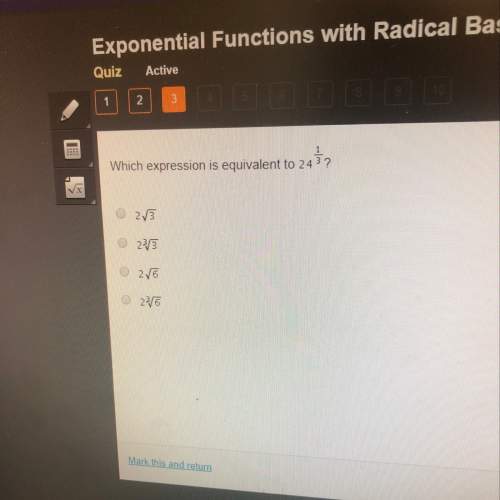
Mathematics, 27.07.2019 01:00 srsnider2017
If a parametric surface given by r1(u, v)=f(u, v)i+g(u, v)j+h(u, v)k and −2≤u≤2,−3≤v≤3, has surface area equal to 4, what is the surface area of the parametric surface given by r2(u, v)=4r1(u, v) with −2≤u≤2,−3≤v≤3?

Answers: 1


Another question on Mathematics

Mathematics, 21.06.2019 18:30
Solve 2x2 + 8 = 0 by graphing the related function. there are two solutions: . there are no real number solutions. there are two solutions: 2 and -2
Answers: 3

Mathematics, 21.06.2019 19:30
Me. i can't figure out this question. give an explanation too. .
Answers: 1


Mathematics, 21.06.2019 23:40
Binh says the point of intersections is (0,-3) which statements identify the errors binh made , check all that apply
Answers: 2
You know the right answer?
If a parametric surface given by r1(u, v)=f(u, v)i+g(u, v)j+h(u, v)k and −2≤u≤2,−3≤v≤3, has surface...
Questions





English, 04.08.2019 22:00

Biology, 04.08.2019 22:00




Mathematics, 04.08.2019 22:00

Mathematics, 04.08.2019 22:00

Mathematics, 04.08.2019 22:00

History, 04.08.2019 22:00

Mathematics, 04.08.2019 22:00

Mathematics, 04.08.2019 22:00

Mathematics, 04.08.2019 22:00

English, 04.08.2019 22:00


Mathematics, 04.08.2019 22:00


 and vectors
and vectors  ,
,


 is 16 times that of
is 16 times that of  .
.


